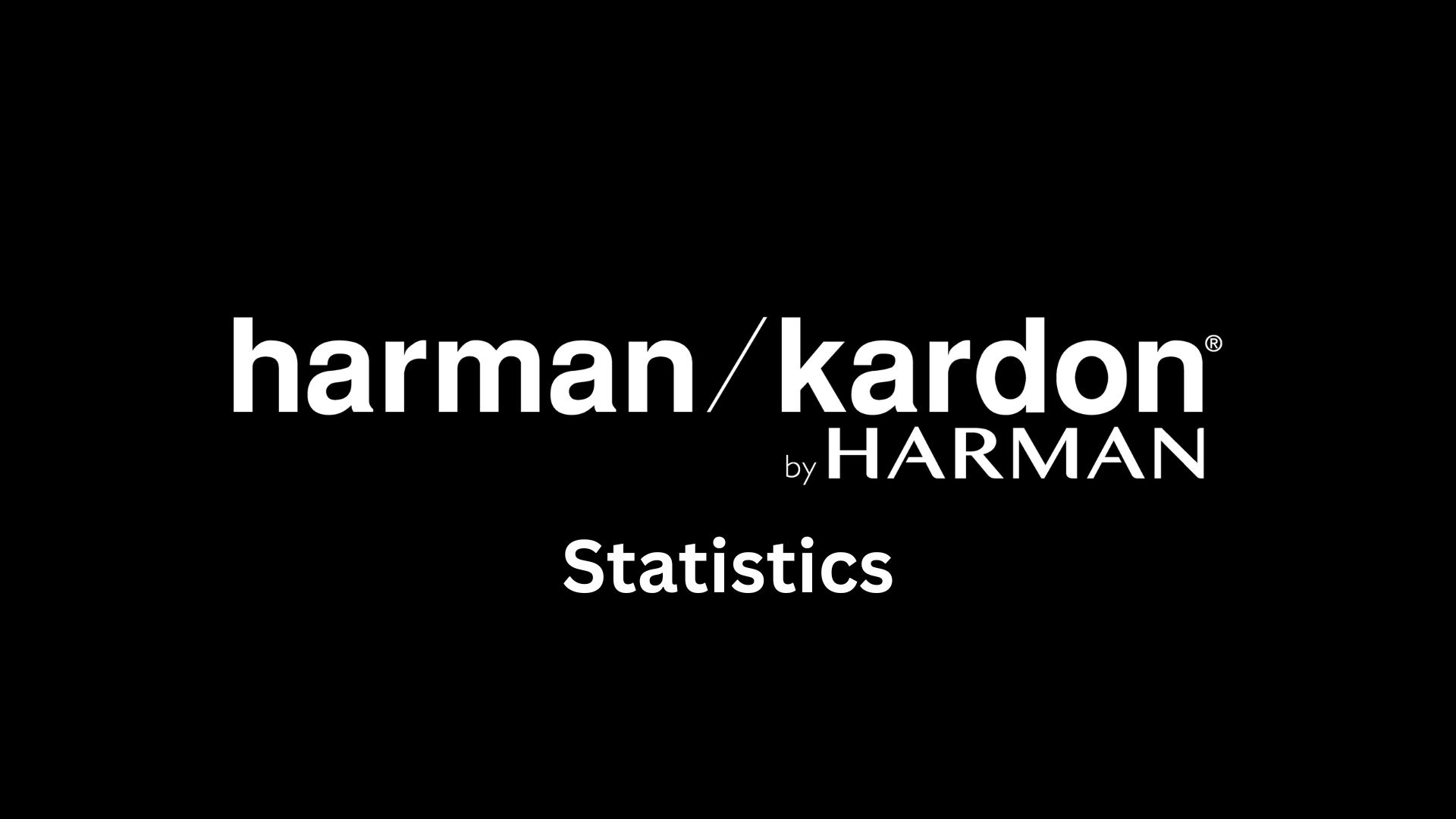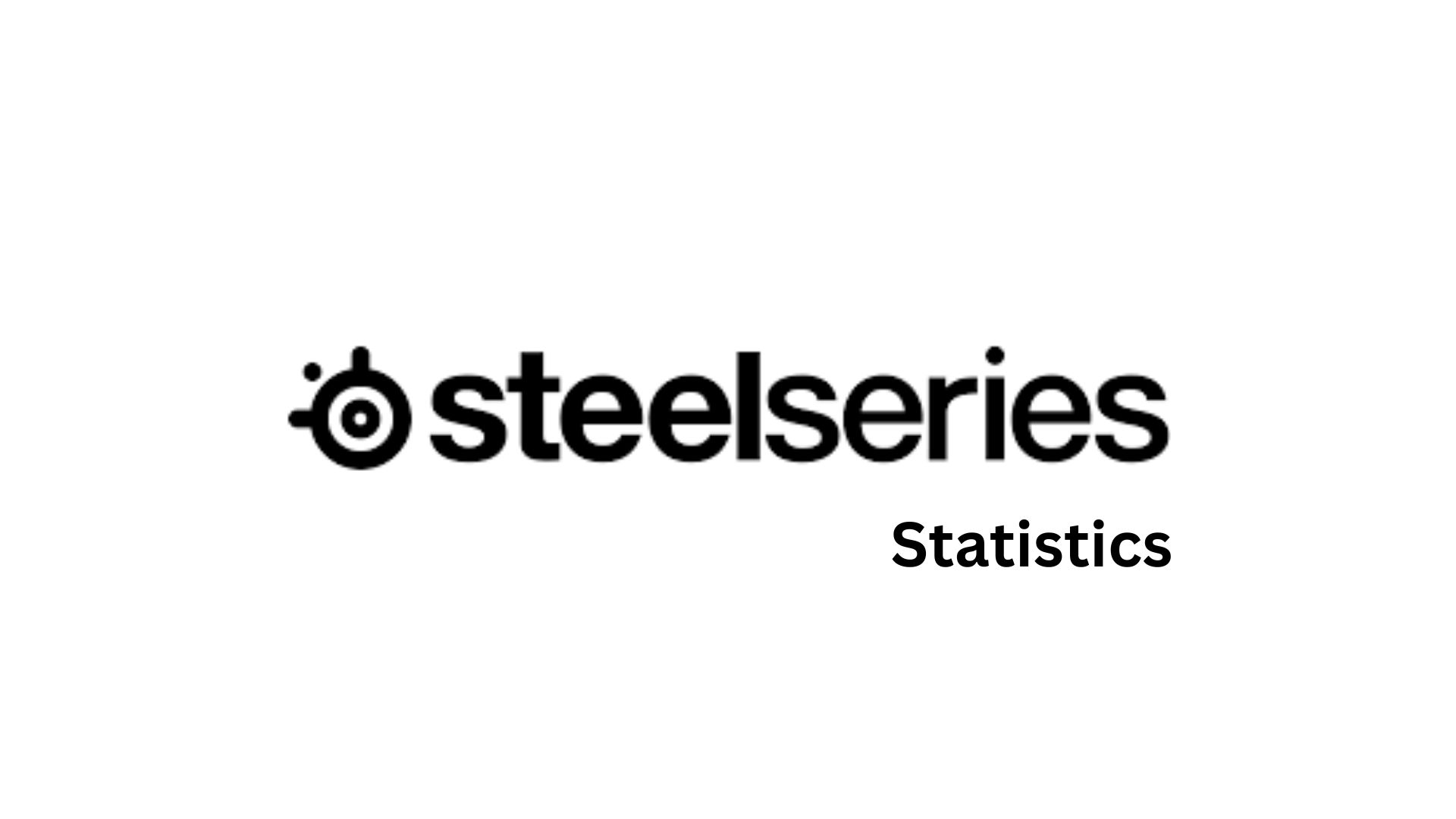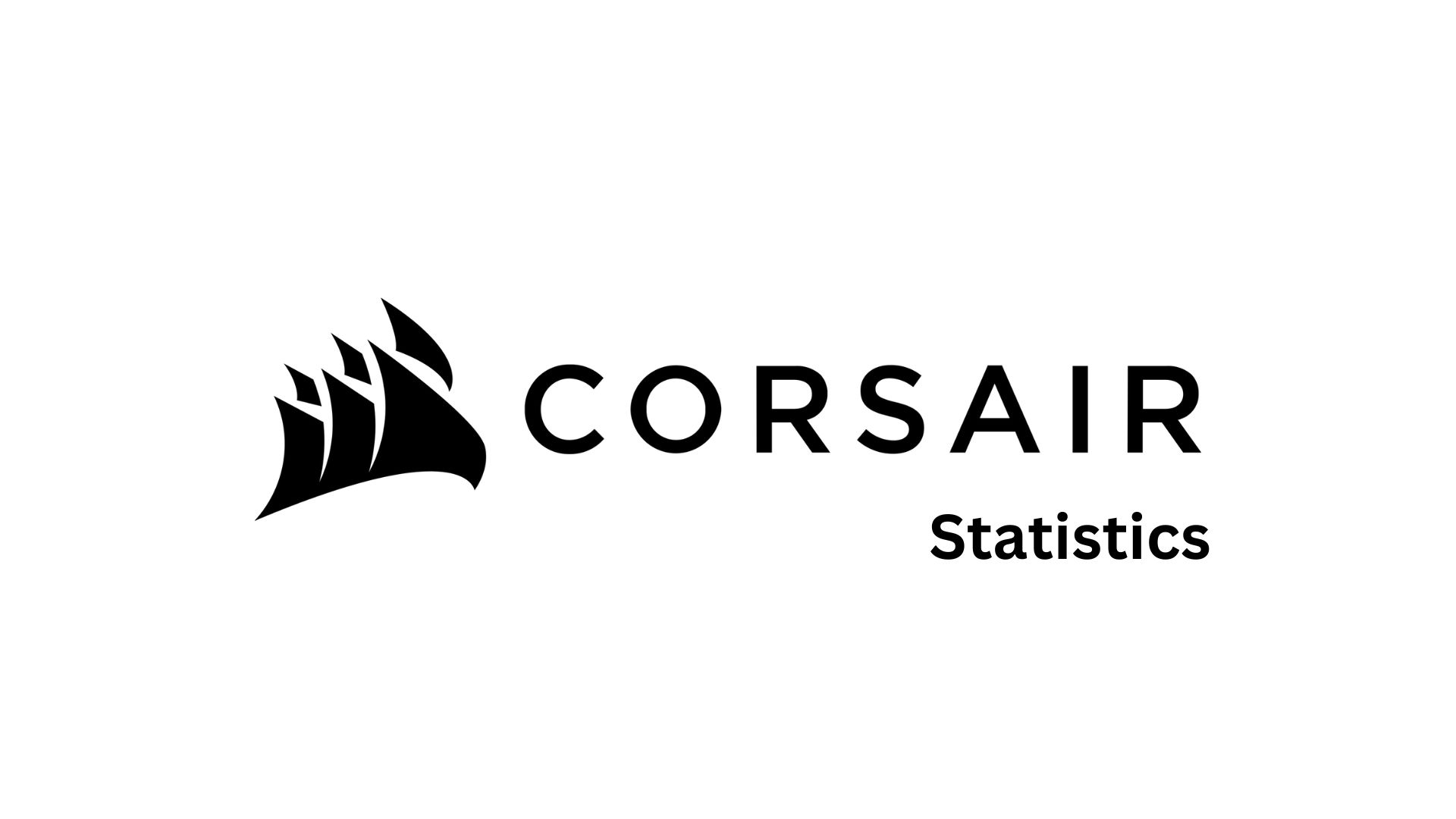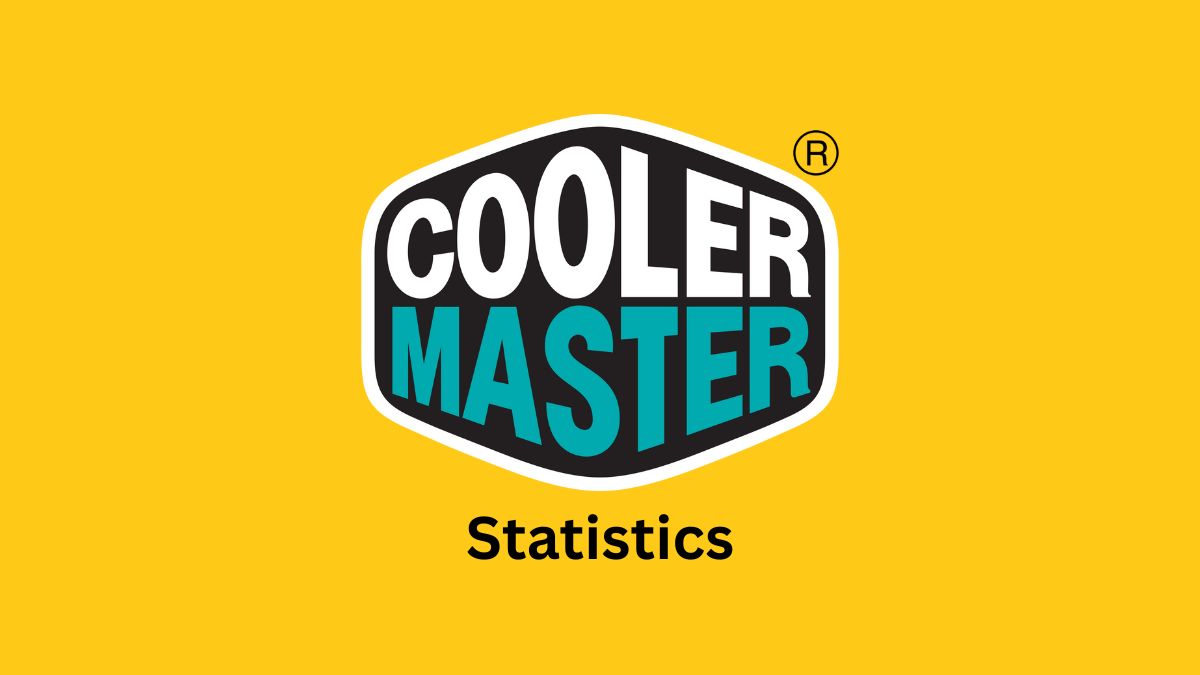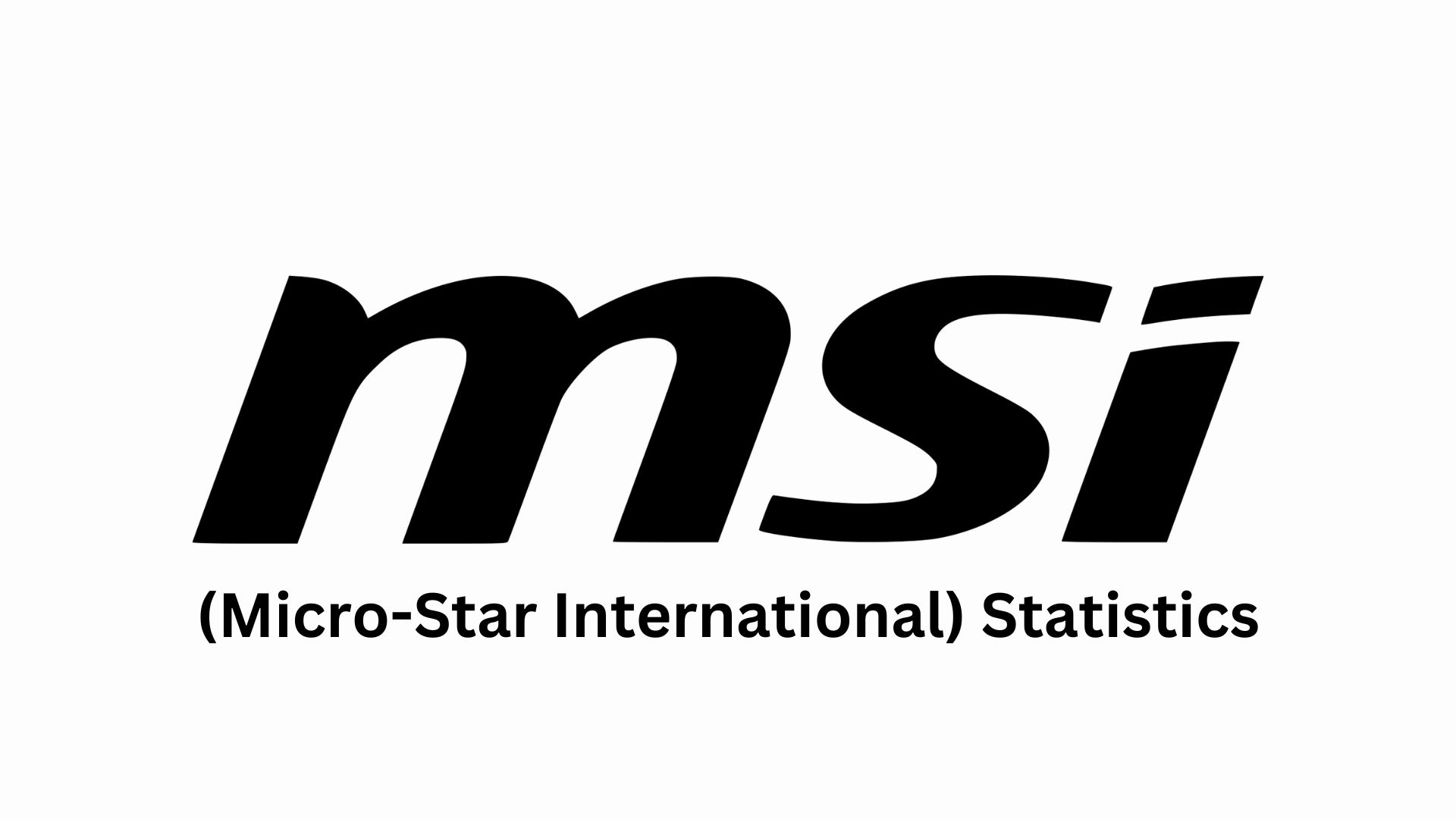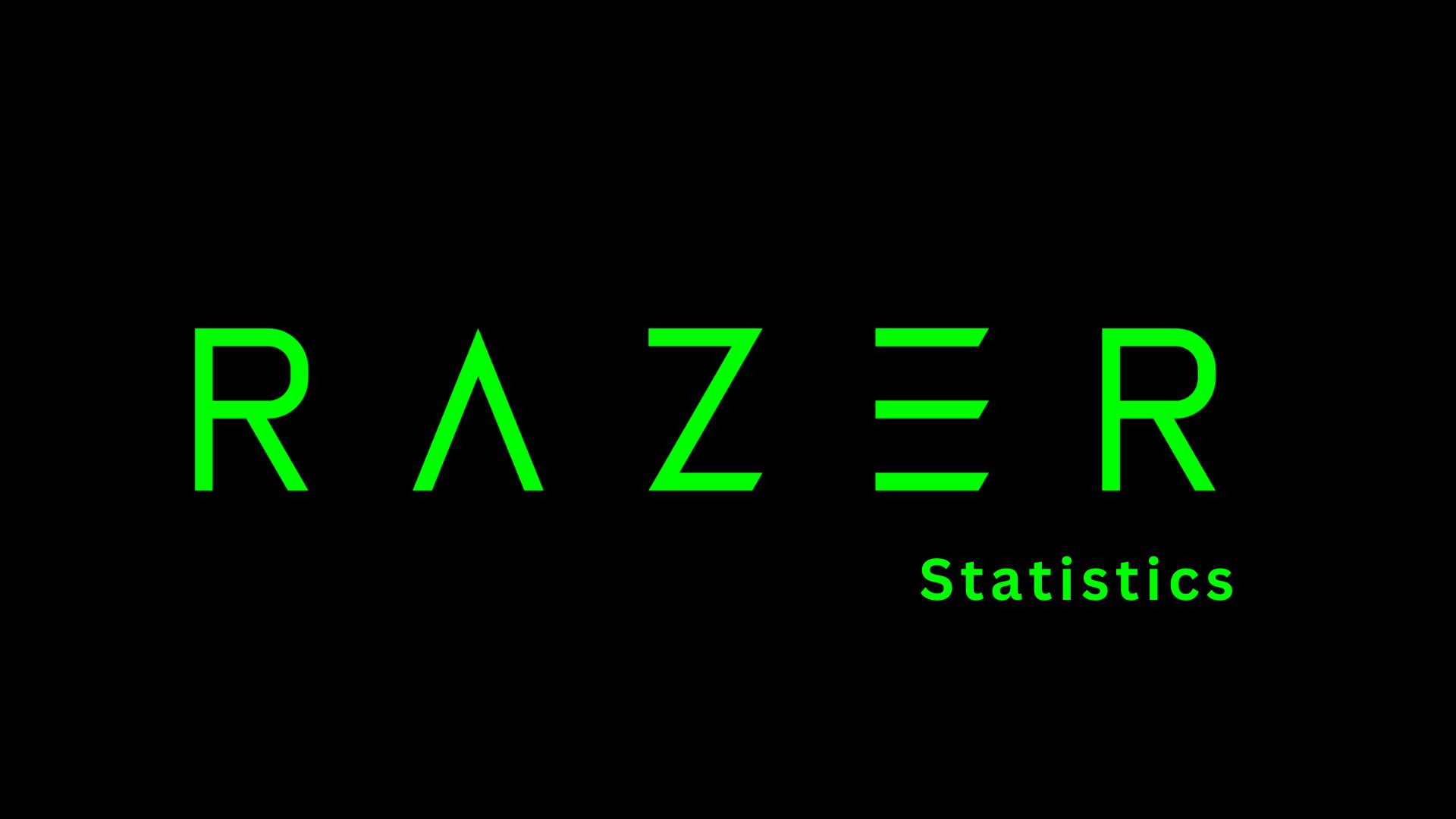ChromeOS Statistics By Market Share, Distribution, Adoption, Productivity, User Behaviour, Trends and Facts (2025)
Updated · Oct 05, 2025
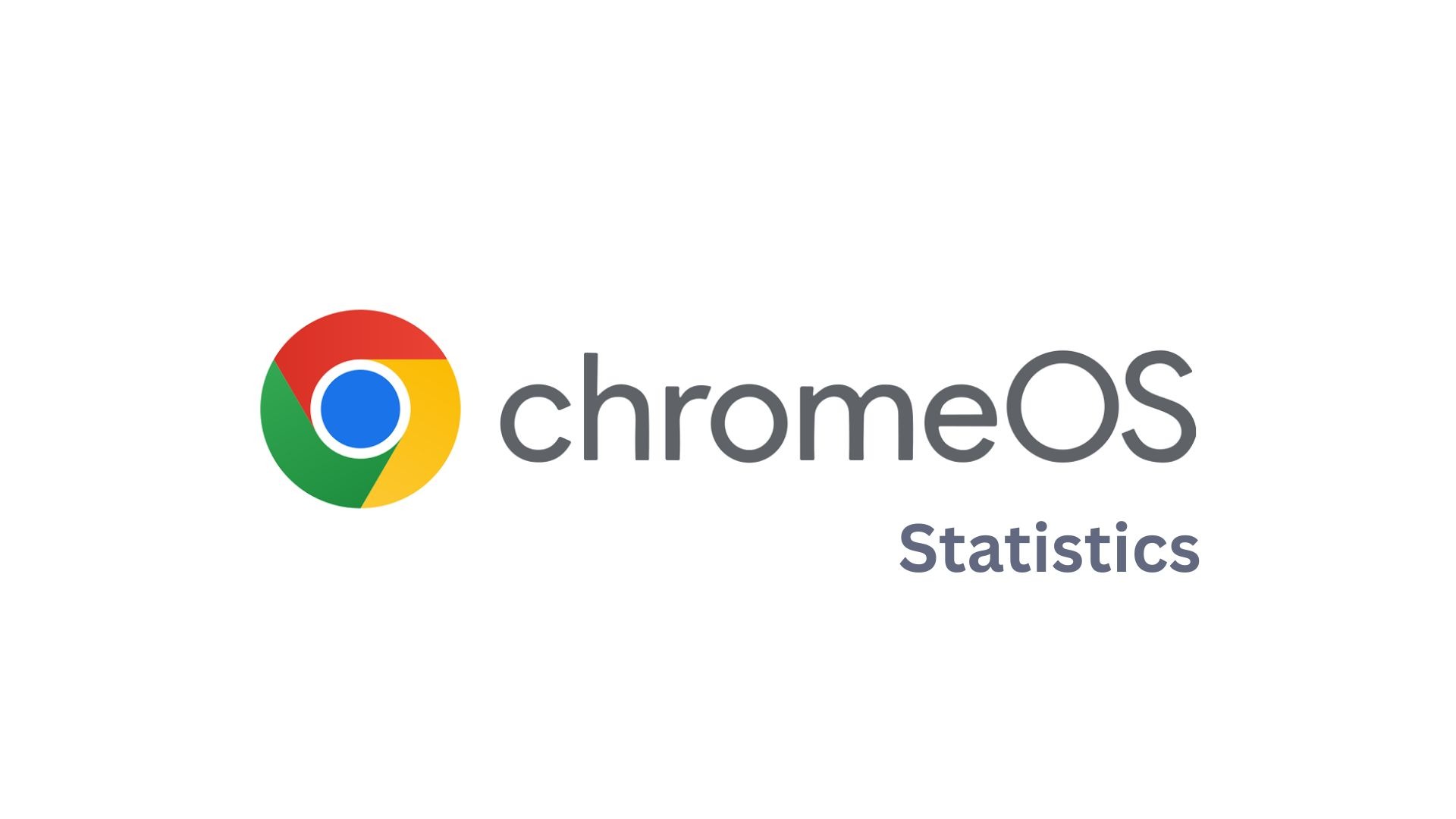
Table of Contents
- Introduction
- Editor’s Choice
- ChromOS Market Share
- ChromeOS Market Share By Region
- Global Desktop CromeOS Market Share by Region
- ChromeOS Automatic Update Lifecycle
- ChromOS Stable Channels Releases And Distribution
- Education Sector ChromeOS Installation And Updation
- ChromeOS Update Adoption And Market Growth Trends
- Estimated ChromeOS Update Installation Rates Analysis
- Google Chrome Extension Statistics
- Chrome, Productivity, And User Behaviour
- Conclusion
Introduction
ChromeOS Statistics: There is no more a niche operating system in ChromeOS in 2025, as it has taken a dominant position in the global computing landscape. It graduated from being popularised in educational settings and made its forays into enterprise and consumer markets. Leading this transformation are investments in AI, hardware innovation, and increasing acceptance of the platform’s cost-effectiveness and security.
This article explores the vital ChromeOS statistics and trends steering the course today.
Editor’s Choice
- Google Chrome has a market share of 66.75% in the mobile browser industry in March 2025, surpassing Apple Safari, which grabbed only 23%.
- Murky with the desktop browser market, with almost 67% share of it, Chrome is the world’s leading internet browser.
- ChromeOS holds 1.86% of the global desktop market share, but the figure rises to 8.44% in the U.S., mostly because of the educational sector.
- 93% of school districts in the U.S. are going to purchase Chromebooks in 2025, with shipments being estimated at 22.11 million units.
- ChromeOS was updated thrice (versions 132, 133, and 134) in early 2025 to furnish the latest software environment for device support.
- According to a report, Chromebook global revenue is estimated to hold at US$14.7 billion in 2025 and grow to US$42.9 billion by 2034 with a CAGR of 12.62%.
- There are presently 137,345 Chrome Extensions worldwide, with 86.3% having less than 1,000 users, while only 13 have in excess of 10 million users.
- In the Chrome Web Store, productivity-related extensions account for 55% of all extensions, whereas only 4.7% of them are paid.
- On average, users spend about 3 hours on smartphone apps every day; Chrome gets considerable screen time along with productivity apps.
- Chatbots and other AI tools recorded 55.88 billion visits in 12 months; retention is lower than traditional productivity apps, though.
- Supported by Google service integration, security, and cross-platform consistency, Chrome holds a global market share of 64.86%, with 3.45 billion users.
- Focused and productivity apps are beneficial in quantifiable ways: 25% more task completion, 3 to 4 hours saved on time per week; 498 hours of increased productivity for one user annually.
- The productivity app market will hit US$24.79 billion by 2033, showing the increasing demand towards the flow of optimisation tools.
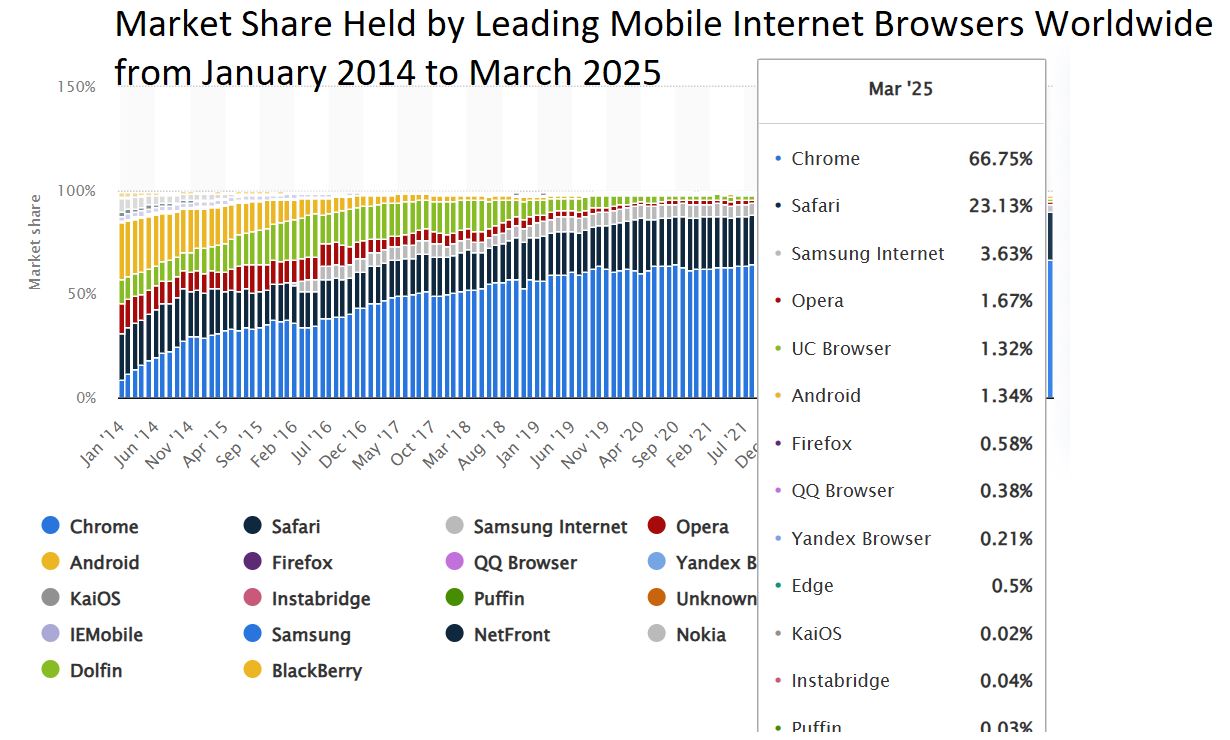
(Source: statista.com)
- The Google Chrome browser has made its mark as the top-ranked browsing application worldwide.
- It further boasts of holding 66.75% of the mobile browser market share as of March 2025, whereas Apple ranks next with its Safari browser at a mere 23%.
- The rest of the browsers are occupied by Samsung Internet and Opera, among a few others.
- Browsers matter, as about half the human population in the world regularly uses the internet, and they serve as the entry points for individuals to access online content.
- Google Chrome is thus dominant not just on mobiles; it also rules the web browser market at large.
- Being ranked first and second worldwide by themselves in December 2024, Chrome and Chrome for Android continued to be the strongest desktop browsers, with desktop versions accounting for almost 67 % of the desktop browser market share by a massive lead over its competitors.
- Since it was introduced in 2008, Chrome has probably become one of Google’s most successful products, aside from Google Search, Android, and Gmail.
- The success of Chrome, however, has permitted Google also to pursue Chrome OS, Chromecast, and Chromebooks with vigour, making the Chrome brand area for a strong collection of products.
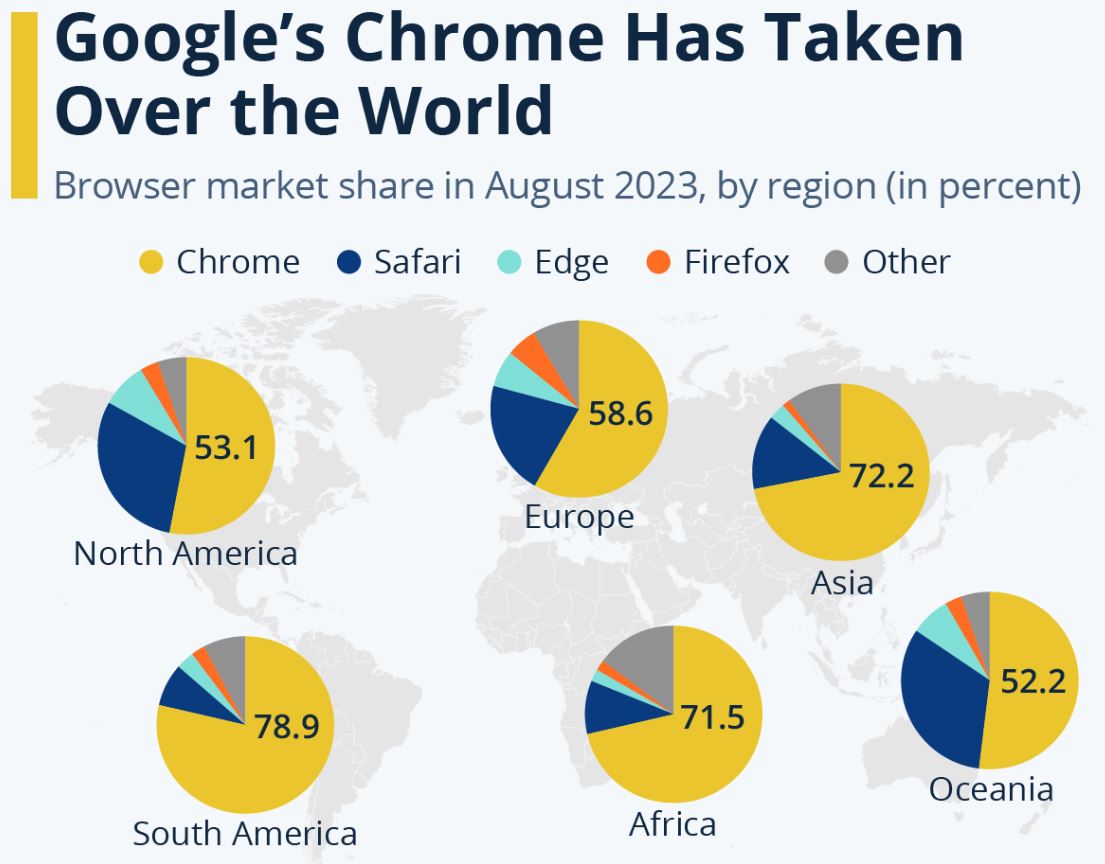
(Source: statista.com)
- According to StatCounter data, ChromeOS statistics show that it holds its position as the world’s leading browser, capturing 63.6% of the world’s web users between July and August 2023.
- Safari grabs the second position with just under 20 %, while Edge claims 5.4 % of the share, followed by Firefox’s 2.9 %, Opera’s 2.7 %, and Samsung Internet’s 2.3 %. Chrome’s grip is strongest in South America, with a market share of 78.9 %.
- In Europe and North America, this share slips to 58.6 and 53.1 %, respectively. Chrome holds 51.7 % of the market in the US, followed by Safari (30.8 %), Edge (8.4 %), Firefox (3.5 %), Opera (3.5 %), and Samsung Internet at 1.1 %.
- Interestingly, there are several smaller countries and territories wherein Safari emerges as the most popular browser, including North Korea (90.99 %), Bermuda (92.7 %), the Faroe Islands (78.52 %), and Andorra (56.9 %).
- Armenia is pretty much the only country where Firefox tops the list with 55 % as opposed to Chrome’s 31.9 % and Safari’s 8.7 %.
- Opera supersedes Safari in Africa as the second most popular browser after Chrome.
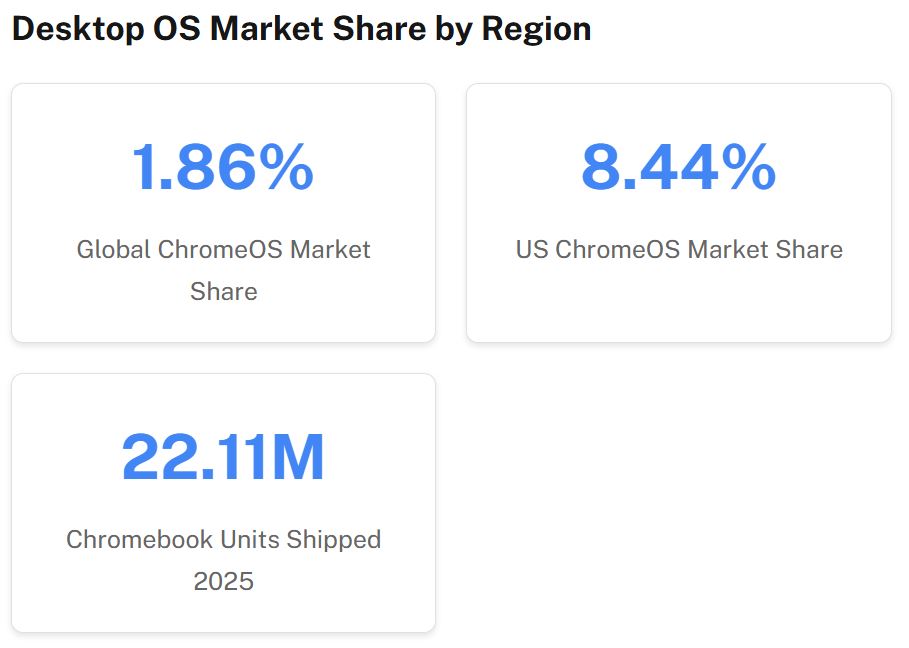
(Source: aboutchromebooks.com)
- With a percentage share of 1.86 in the international desktop operating system market, ChromeOS has a very small existence.
- However, the scenario is completely inverted when one speaks of the U.S.-where it sports an 8.44% market share.
- The higher adoption rate in the U.S. is mainly due to the education sector, as schools are a major promoter of Chromebook use. 93% of the U.S. school districts will be purchasing Chromebooks in 2025, thereby fueling shipments that year at around 22.11 million units.
- The education sector thus plays a key role within the U.S., giving a great advantage to ChromeOS update installations in this country as opposed to most other geographies.
ChromeOS Automatic Update Lifecycle
- Google extends automatic update support for ChromeOS devices for 10 years from 8 in 2023 for all devices launched from the year 2019 onward.
- ChromeOS devices now get updated once every 4-6 weeks, and the updates get installed automatically.
- Having a support policy for 10 years ensures that devices will be updated throughout their life period, thereby getting very high installation rates.
- This ensures that ChromeOS devices are always rated highly with regard to their security and performance in the ecosystem.
ChromOS Stable Channels Releases And Distribution
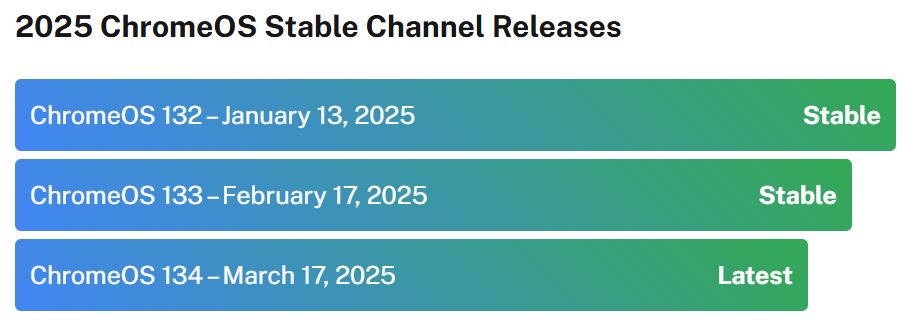
(Source: aboutchromebooks.com)
- Three stable ChromeOS releases were delivered by Google in rapid succession in early 2025: 132 on January 13, 133 on February 17, and 134 on March 17.
- The pace for such prompt releases shows Google’s focus on timely security patching and feature delivery.
- Considering updates on ChromeOS install without any manual intervention, the above schedule would serve to help keep most active devices current, thereby also maintaining one of the consistently highest update installation rates on the platform.
Education Sector ChromeOS Installation And Updation
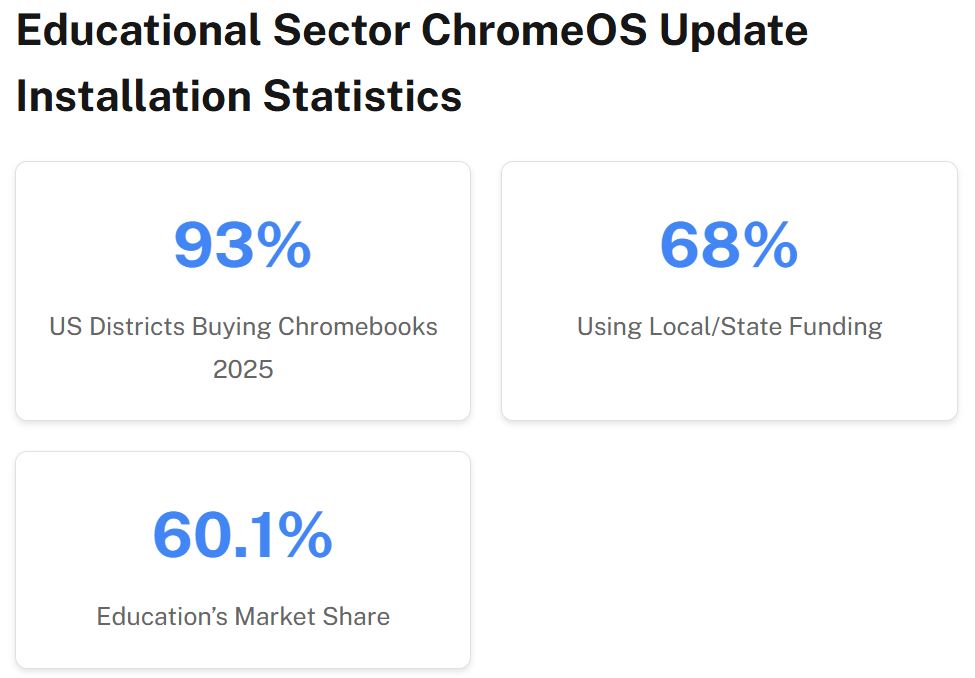
(Source: aboutchromebooks.com)
- A large chunk of ChromeOS update installations is driven by educational establishments. In 2025, 93% of U.S. school districts plan Chromebook purchases, a marked increase from 84% in 2023.
- Nearly 68 % of those purchases are paid for through local or state funding, and education makes up 60.1 % of ChromeOS’s total market share.
- With Chromebooks present on a large scale in schools and automatic updates shipped with the system, installation rates have remained consistently high over time.
- This trend further points to an increased trust by Google for Education, as schools look toward the platform for dependable update delivery.
ChromeOS Update Adoption And Market Growth Trends
- Enterprises are turning in increasing numbers toward ChromeOS, with update installation statistics being a proxy for reliability and stability.
- Business productivity comparisons between ChromeOS and Windows quite often put ChromeOS in a favourable light, and its automatic updates decrease IT management costs and ensure security compliance.
- Further pushing this trend is the Chromebook market upsurge-one with global revenues expected to hit US$14.7 billion in 2025 and then US$42.9 billion by 2034 at a CAGR of 12.62 %.
- Since new devices are usually updated within days of activation, shipment volumes forming a lesser or greater basis of ChromeOS update installation coverage are quite straightforward.
- Regional differences also shape the installation patterns, with North America holding a 52.4% share of the global market, but Oceania is growing at the fastest pace at 4.70 % CAGR, leading to various update outcomes and rates being experienced from region to region.
Estimated ChromeOS Update Installation Rates Analysis
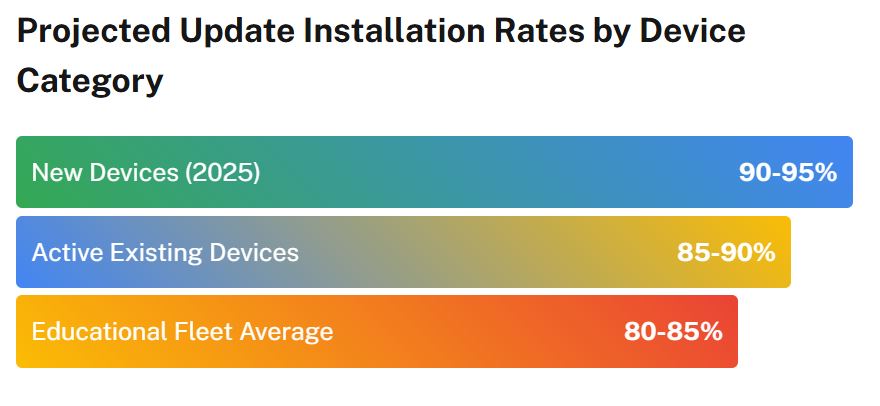
(Source: aboutchromebooks.com)
- ChromeOS update install rates are expected to be high in 2025 throughout all device categories, averaging beyond 85%.
- New devices are in the strongest install rates of around 90-95, as update checks happen immediately on activation and during setup.
- Active installed existing devices would maintain install rates of up to 85 to 90 %, while educational fleets sit somewhat below, averaging 80 to 85%.
- These figures are affected by auto-update policies and a steady market growth, meaning most ChromeOS devices are never behind on updates.
Google Chrome Extension Statistics
- Today, about 137,345 Chrome extensions are available for installation worldwide.
- However, most extensions have a really small user population: 86.3% of all extensions are used by under 1,000 users, whereas the remaining extensions are much more popular, with over 100,000 users each.
- About 1,800 malicious uploads fly to the Google Chrome extension store monthly, indicating the security issues this platform faces.
- Approximately 10 million to hundreds of thousands of downloads classify a small fraction of about 50 Google-bought extensions.
- Only 13 extensions have crossed the 10 million user mark; hence, an extremely tiny fraction of extensions really achieve huge popularity.
- Median rating for Chrome extensions stands at 4.1 out of 5, indicating overwhelmingly positive reviews by users.
- Entertaining or “Fun” constitutes 22.4% of the category distribution, while photography-based extensions come next with 19.1%.
- Social or communication extensions tally at 7.2% while developer tools are at 6.9%.
- Finally, about 4.7% of Chrome extensions require payment, which means almost all are free.
Chrome, Productivity, And User Behaviour
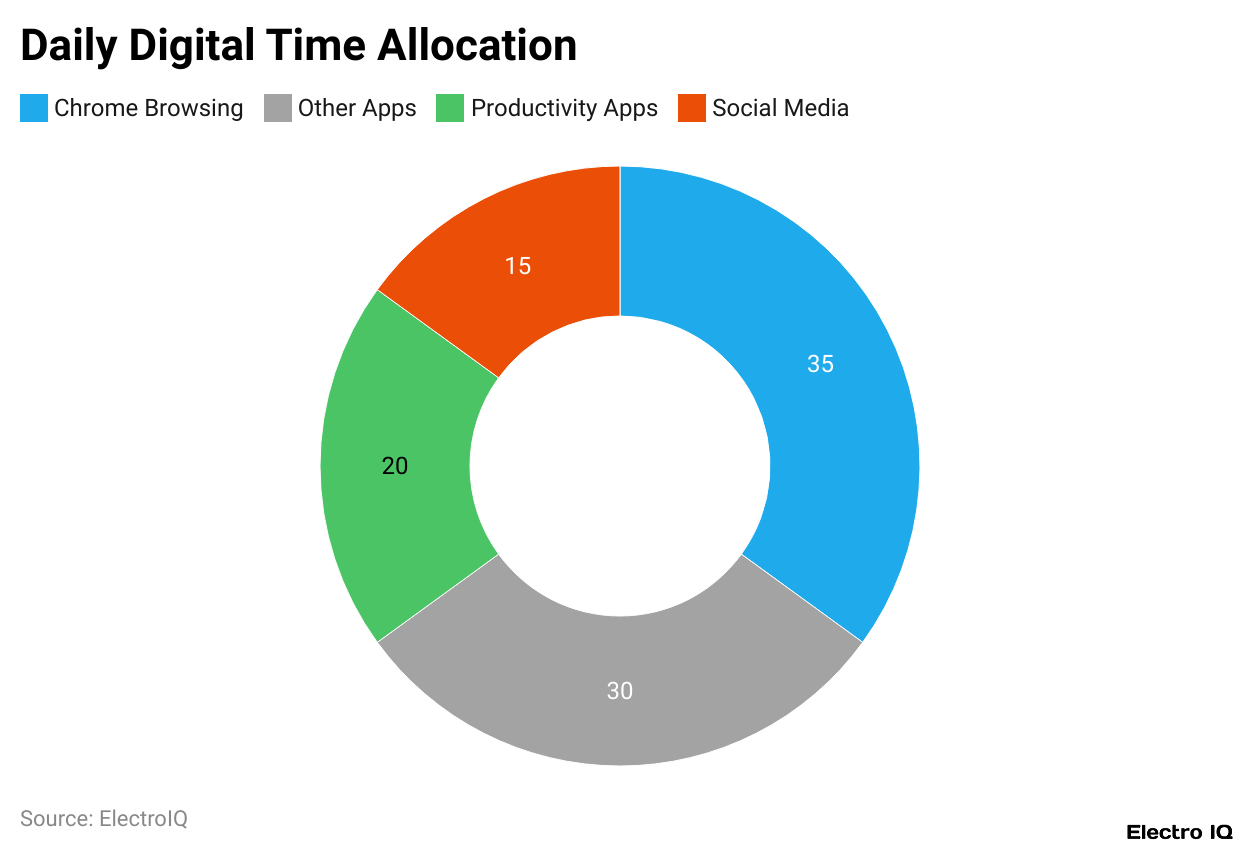
(Reference: aboutchromebooks.com)
- Currently, users spend close to 3 hours daily on smartphone apps, interacting with approximately 10 apps each day and 30 in a month.
- Among these, Google Chrome claims a massive fragment of screen time running down browsing, followed by productivity apps taking time for scheduling, managing emails, and organising.
- While remaining with many open tabs can impact productivity, users in huge numbers today are consciously learning to balance between browsing and focused work.
- The Chrome extension ecosystem is such that it engenders this dichotomy, with 111,933 extensions currently offered for downloading in the Chrome Web Store.
- Productivity extensions are the most widely represented, making up over 55% of all extensions, reflecting the users’ itch for efficiency.
- However, most extensions are small developers: 86.3% of these have fewer than 1,000 users, and 0.24% of them have more than a million users. This ecosystem aids general browsing along with focused productivity tasks.
- AI tools, though quite popular, face challenges with user retention. AI chatbots, for instance, netted 55.88 billion visits in 12 months, yet users swap between tools to find the winning solution.
- Conversely, traditional productivity apps fare better at retaining users, principally through integration into workflows and investment of time for setup and customization.
- Another important reason for Chrome’s success is security. Safe Browsing protects 4 billion users worldwide, issuing 250 million malware warnings every month.
- Chrome updates two times roughly every six weeks, and patches a critical vulnerability in less than 24 hours.
- Despite this, users tend to approve permissions without reading them in full, thus creating a gap between Chrome’s strong security features and the users’ behaviour.
- Chrome’s dominance can be attributed to several factors: It has a worldwide market share of 64.86% having almost 3.45 billion users.
- It is tightly bound with Google services and Android systems; it offers utmost security; it has an extension ecosystem—a very large one, tailored for productivity; and it provides a consistent experience on all platforms.
- Productivity and focus apps, on the other hand, provide real, measurable value: 25% in terms of task completion, savings of about 3-4 hours per week, and around 498 hours worth of annual productivity per user.
- With the market expected to hit US$24.79 billion come 2033, these apps have surely seen their importance rapidly mounting towards workflow optimisation and focus.
Conclusion
ChromeOS Statistics: In 2025, ChromeOS and Google Chrome will still be ruling the browser and desktop markets, with widespread adoption, especially in education, paramount security, and a rich diversity of extensions forming the bedrock behind this leadership. In other words, users trust automatic updates, enjoy long-term support through several productivity-focused tools, and hence remain highly engaged.
The extension ecosystem, coupled with AI and productivity applications, shall allow for greater productivity while adhering to Chrome’s security standards by over 4 billion users worldwide. These are favourable conditions for the continued growth of ChromeOS and its ecosystem, as the worldwide revenue for Chromebooks is expected to touch US$42.9 billion by 2034, and the productivity applications market is expected to grow to US$24.79 billion, creating a smooth bridge between browsing, work, and learning.
FAQ.
Worldwide, ChromeOS holds 1.86% of the desktop market share, but in the U.S., it increases to 8.44%, mainly because of high adoption in the education sector.
There are 137,345 Chrome extensions worldwide; 86.3% of these have fewer than 1,000 users, while only 13 extensions have crossed 10 million users.
ChromeOS ensures 10 years of automatic updates every 4 to 6 weeks, with critical vulnerabilities addressed in 24 hours, protecting 4 billion users through Safe Browsing.
Users spend approximately 3 hours in apps every day, while Chrome surely occupies much of the screen time. On the other hand, productivity apps assist with handling emails, scheduling, and task management.
The projected valuation of the global Chromebook industry is US$14.7 billion in 2025, which from there is set to climb to US$42.9 billion by 2034, while the productivity app market is projected to grow and reach US$24.79 billion by the year 2033. This market growth is a good indication that more people are adopting these platforms and optimising their workflows with them.

I hold an MBA in Finance and Marketing, bringing a unique blend of business acumen and creative communication skills. With experience as a content in crafting statistical and research-backed content across multiple domains, including education, technology, product reviews, and company website analytics, I specialize in producing engaging, informative, and SEO-optimized content tailored to diverse audiences. My work bridges technical accuracy with compelling storytelling, helping brands educate, inform, and connect with their target markets.


